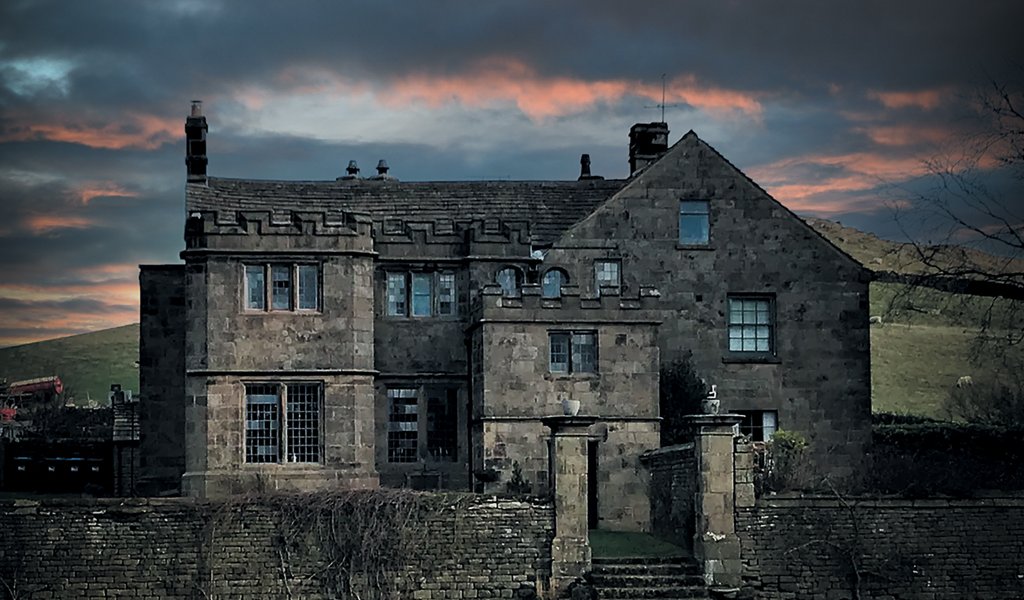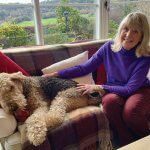It’s that time of year when the lanterns are lit and attention turns towards all things supernatural. Those feeling brave enough to seek out a spooky encounter this Halloween are spoilt for choice. With so many historic buildings, ancient sites and tragic tales, it’s no wonder that Derbyshire has more than its fair share of ghosts and ghouls. Helen Shepherd reports.
HIGHLOW Hall, near Hathersage, has been called ‘the most haunted house in Derbyshire’. Now part of a private working farm, it was built for one of the most prominent local families, the Eyres. Its earliest ghostly tale dates from the 14th century. The dastardly Nicholas Eyre set out to seduce two sisters, interested only in claiming their fortune. When one of the young women discovered his true motive, she took her own life, later making a dramatic reappearance in ghostly form to curse the entire Eyre family.
It seems Nicholas is personally responsible for creating a second spirit at Highlow. Another apparition seen there is that of a workman – possibly a stonemason – who Eyre allegedly ran through with his sword for shirking on the job. The unfortunate tradesman has been spotted a number of times over the years, as has the so-called ‘White Lady’. Believed to be the ghost of a woman who was murdered at the house, she has been seen by many witnesses wandering the hall at night.
There are plenty of other haunted historic houses to explore in Derbyshire. The spirit of Dorothy Vernon – whose romance with John Manners has entered local legend – is said to walk the corridors of her ancestral home, Haddon Hall, and has even been seen fleeing down the steps that bear her name.
The Hagge at Nether Handley, Sutton Scarsdale Hall, Youlgreave Hall, Chatsworth House and Hardwick Hall all have their own resident ghosts. At Hardwick, it is said that Bess herself stalks the building, no doubt keeping a very close eye on those visiting her precious home.
Given its well-known and oft-told history, it’s hardly surprising that the plague village of Eyam is said to be rife with paranormal activity. The spirit of Catherine Mompesson, wife of the rector who encouraged villagers to quarantine themselves in 1665, has reportedly been seen wandering the churchyard. Ghostly goings on in the rectory itself, from disembodied footsteps to doors opening and closing, have also been attributed to its former resident Catherine.
The village’s ‘plague cottages’ are home to various spirits including a kindly-looking lady in a blue smock. A weeping boy has also been spotted on the road leading to the Riley Graves, where seven members of the same family are laid to rest. The plague isn’t responsible for all the village’s spectres, however. Eyam Hall, built in 1671, is said to be haunted by the ghost of former servant Sarah Mills and an old man has been spotted staring through the window of an upstairs room. And be sure to keep an eye out for the phantom cyclist of Eyam Dale!
No ghost hunt around Eyam would be complete without a visit to the village’s most haunted spot, the Miners Arms. Among the spirits said to roam the 500-year-old pub are two young girls and a former landlady, murdered by her husband. Visitors often hear footsteps and unexplained noises, and ghostly activity in the bedrooms drives some guests to leave before the night is over.
An equally spooky spot is Castleton. It will come as no surprise that the medieval fortress of Peveril Castle is said to be haunted by spirits including a white knight, and a phantom horse and hound. Visitors have also heard footsteps and disembodied voices, and ethereal singing. The village’s Castle Hotel houses a number of ghosts including a jilted bride, a nurse, a soldier missing his legs, a man in a pin-striped suit and a lady wrapped in grey light.
Outside the village, Castleton’s famous caverns are reputed to have their own spooks, with reports of shadowy figures and unexplained noises. However it’s the spectacular Winnats Pass that boasts the area’s most famous haunting. The story goes that in 1758 two young lovers, who had run away from their families and were on their way to be married, were ambushed and murdered on the road. Their bodies were discovered ten years later and reinterred at Castleton but it is said their screams of terror can still be heard, and their spirits are often seen wandering together along the pass.
Not all Derbyshire’s ghosts are to be found in ancient buildings. Magpie Mine in Sheldon is reportedly home to a phantom miner, spotted walking through a tunnel with a lighted candle before disappearing without trace. A photograph from the 1940s claims to have captured the image of another spirit. These spooky encounters may be related to a bitter dispute between workers at Magpie and the neighbouring Maypit Mine, which led to the deaths of three Maypit miners in 1883. The widows of the three men are said to have laid a curse on Magpie Mine which has never been lifted.
Given that superstition was part and parcel of a life spent underground, supernatural tales are rife across Derbyshire’s mines. Ghostly apparitions have also been reported at Sallet Hole Mine near Stoney Middleton, Goodluck Mine, Cromford and Hanging Flatt Mine, near Eyam.
If Magpie Mine and its curse sounds like a place to steer clear of this Halloween, the road between Great Longstone and Ashford in the Water is probably best avoided, too. Longstone Lane, also known as Shady Lane, is the site of a particularly ominous apparition. The eerie sight of 12 headless men carrying an empty coffin is said to appear on the road at dusk or dawn. Local legend says meeting this ghostly funeral procession is an omen of death; whoever sees the empty coffin will be the next one to need it. No wonder people avoid the place at night!
At Coombs Dale the sound of ghostly galloping heralds the approach of notorious highwayman Black Harry, preying on unsuspecting travellers. And if you see a shadowy figure moving around Bakewell’s market square at night it could be Anne Green, executed for witchcraft in the 17th century.
For sheer weight of ghostly numbers, it might be impossible to top the Crispin Inn at Ashover. The pub dates back to 1416 and is said to be home to no fewer than 17 spirits including monks, animals, children and former landlords. Pubs seem to be a popular hang-out for ghosts. As well as the afore-mentioned Miners Arms and Castle Hotel, the Eyre Arms at Hassop, the Blue Bell Inn at North Wingfield and the Sun Inn at Chesterfield are just a few of those with at least one departed resident. Clearly there are worse places to spend eternity than in a nice warm pub.
In fact if the stories are to be believed it’s almost impossible to go anywhere in Derbyshire without bumping into someone – or something – supernatural. So whether its railway pioneer George Stephenson enjoying a performance at Chesterfield’s Pomegranate Theatre, the screams of an executed man echoing across Baslow, a murdered peddler in Darley Dale or a phantom coach and horses outside Youlgreave, there’s plenty to discover on a Derbyshire ghost hunt.






